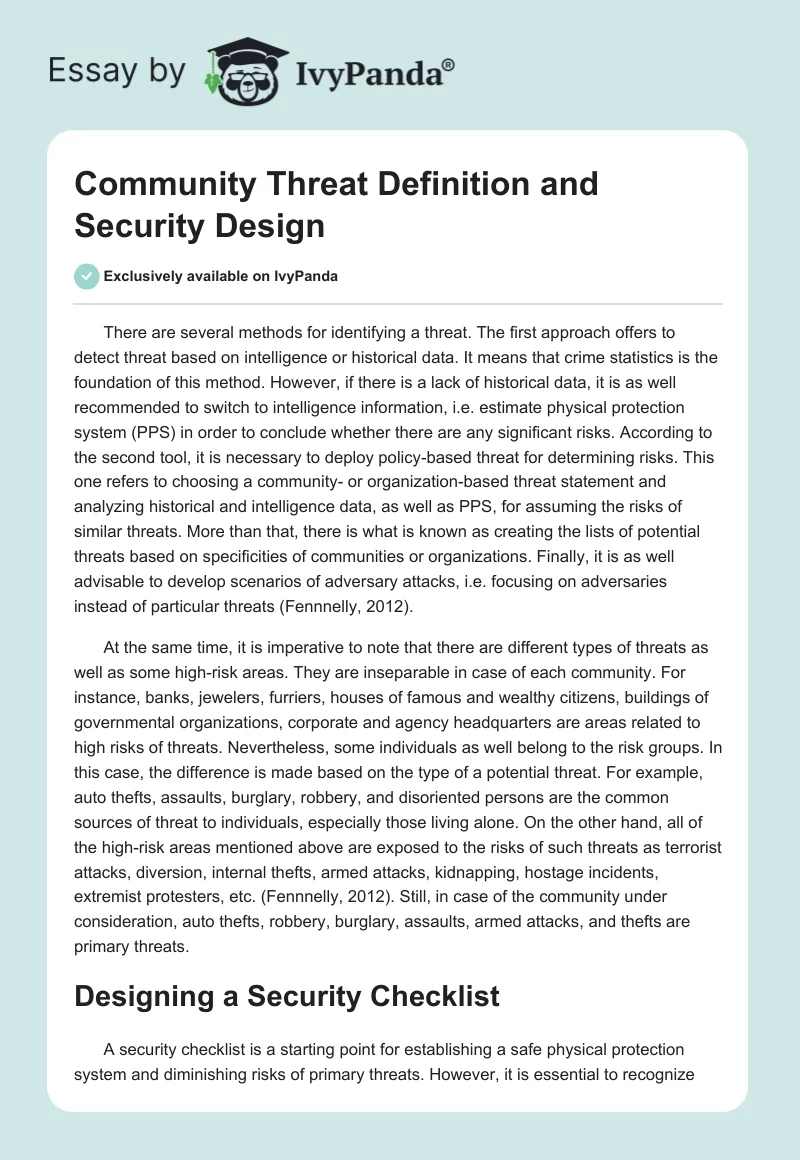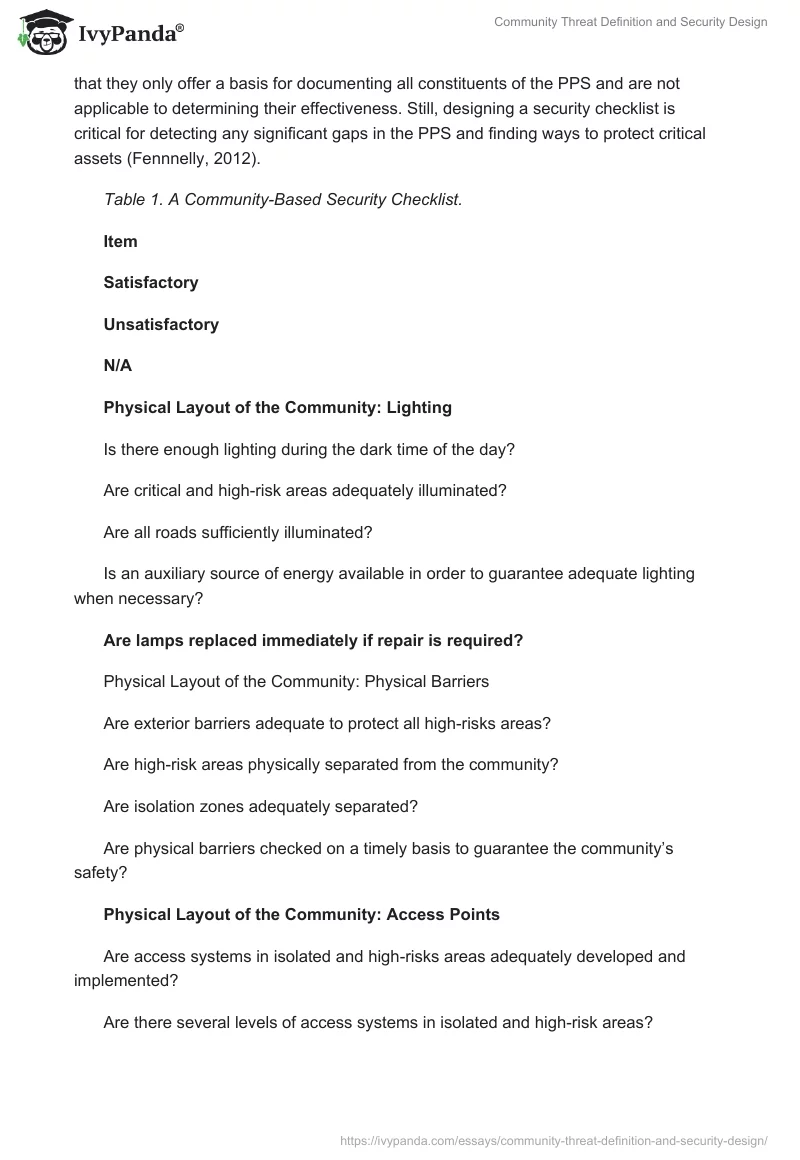There are several methods for identifying a threat. The first approach offers to detect threat based on intelligence or historical data. It means that crime statistics is the foundation of this method. However, if there is a lack of historical data, it is as well recommended to switch to intelligence information, i.e. estimate physical protection system (PPS) in order to conclude whether there are any significant risks. According to the second tool, it is necessary to deploy policy-based threat for determining risks. This one refers to choosing a community- or organization-based threat statement and analyzing historical and intelligence data, as well as PPS, for assuming the risks of similar threats. More than that, there is what is known as creating the lists of potential threats based on specificities of communities or organizations. Finally, it is as well advisable to develop scenarios of adversary attacks, i.e. focusing on adversaries instead of particular threats (Fennnelly, 2012).
At the same time, it is imperative to note that there are different types of threats as well as some high-risk areas. They are inseparable in case of each community. For instance, banks, jewelers, furriers, houses of famous and wealthy citizens, buildings of governmental organizations, corporate and agency headquarters are areas related to high risks of threats. Nevertheless, some individuals as well belong to the risk groups. In this case, the difference is made based on the type of a potential threat. For example, auto thefts, assaults, burglary, robbery, and disoriented persons are the common sources of threat to individuals, especially those living alone. On the other hand, all of the high-risk areas mentioned above are exposed to the risks of such threats as terrorist attacks, diversion, internal thefts, armed attacks, kidnapping, hostage incidents, extremist protesters, etc. (Fennnelly, 2012). Still, in case of the community under consideration, auto thefts, robbery, burglary, assaults, armed attacks, and thefts are primary threats.
Designing a Security Checklist
A security checklist is a starting point for establishing a safe physical protection system and diminishing risks of primary threats. However, it is essential to recognize that they only offer a basis for documenting all constituents of the PPS and are not applicable to determining their effectiveness. Still, designing a security checklist is critical for detecting any significant gaps in the PPS and finding ways to protect critical assets (Fennnelly, 2012).
Table 1. A Community-Based Security Checklist.
Reference
Fennnelly, L. J. (2012). Handbook of loss prevention and crime prevention (5th ed.). Oxford, UK: Elsevier.


